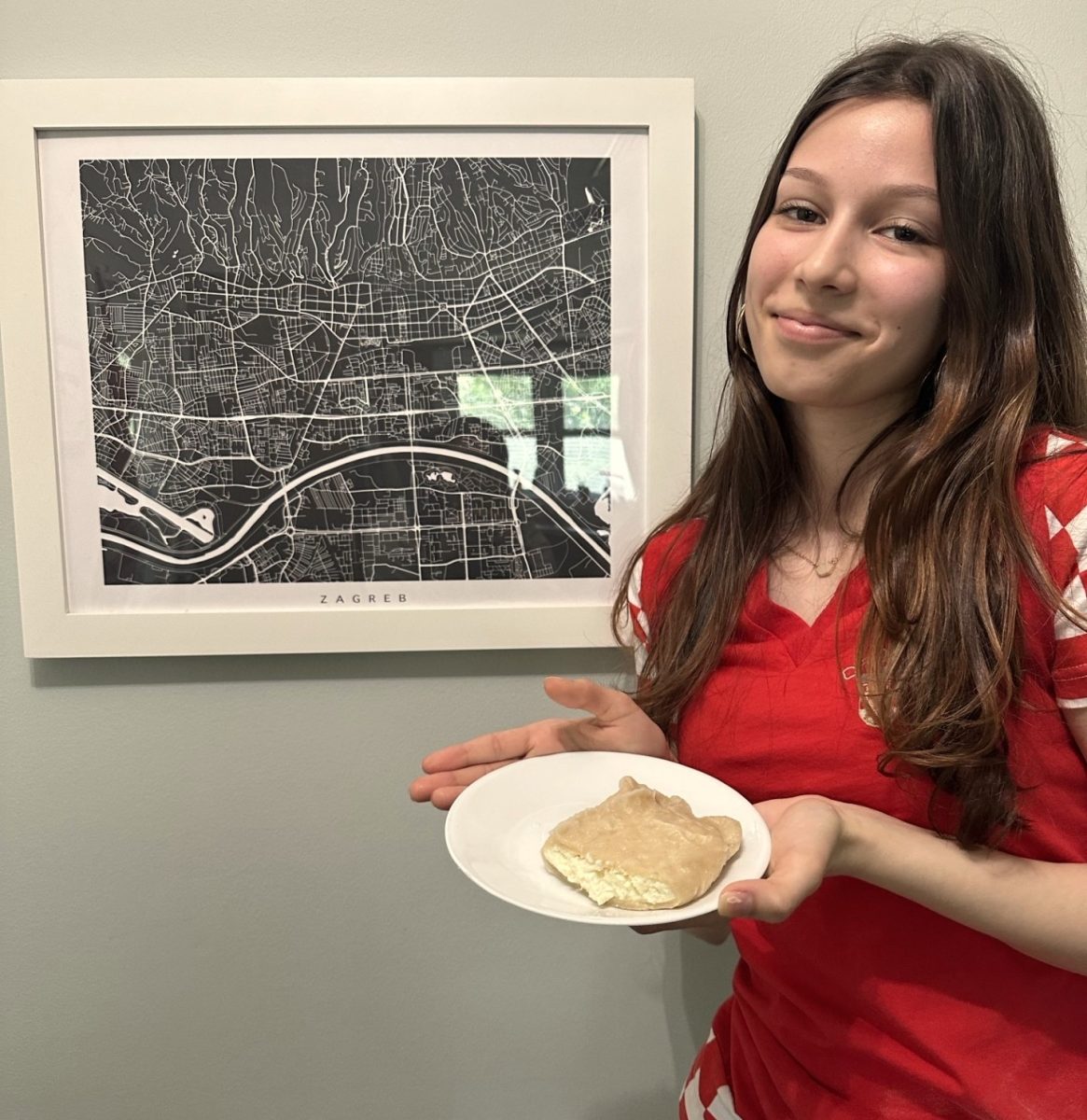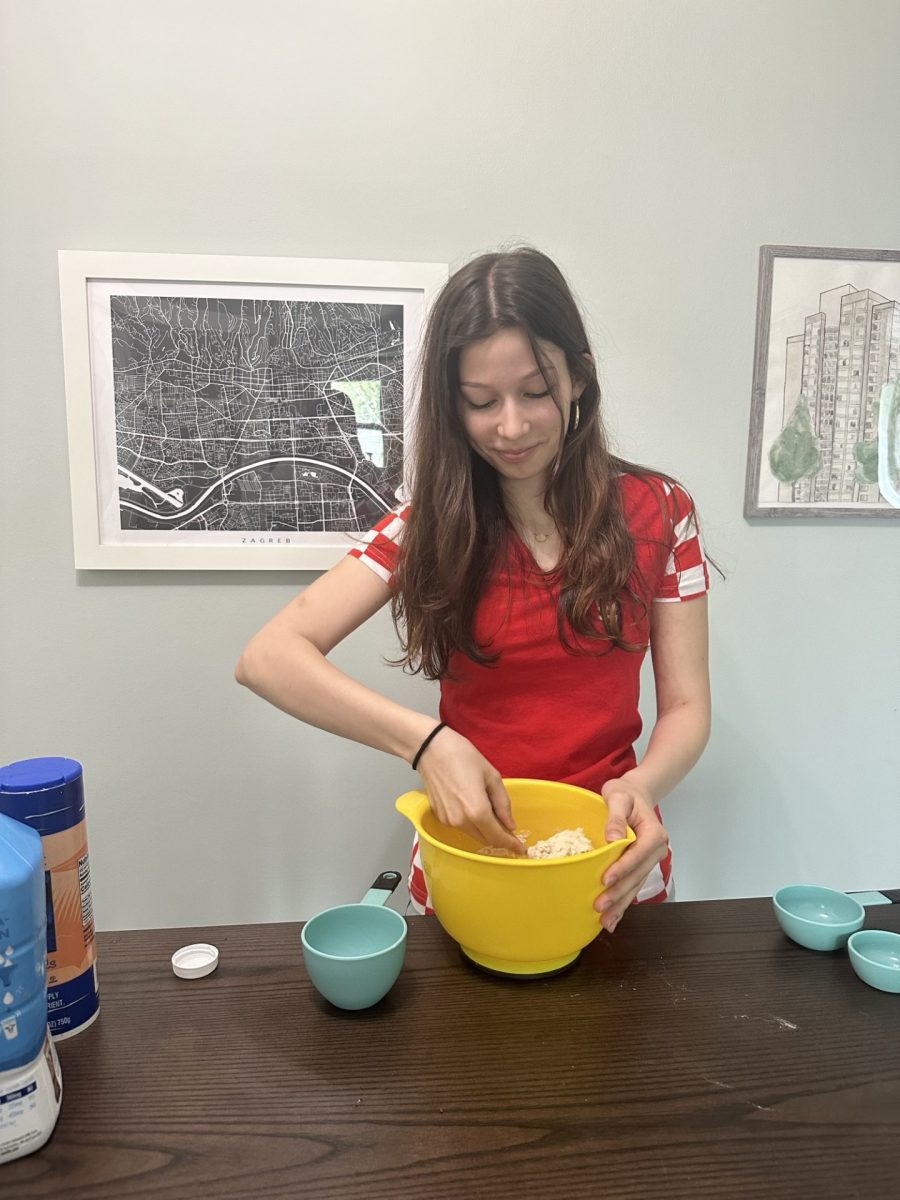Croatia. This crescent-shaped country is located at the northwestern part of the Balkan Peninsula on the Adriatic Coast. It is home to beautiful beaches and a cuisine that has Mediterranean influence and delicious seafood.
My connection to Croatia goes further than simply as a country I would love to visit. My closest childhood friend is the daughter of Croatian immigrants, speaks Croatian, and has learned to make Croatian food from her grandmother who she calls babi. Although there is a lack of Croatian restaurants in my area, thanks to Mia Rasin, I was able to make and eat delicious Croatian štrukli.
When I entered Mia’s home, I was greeted by photos her mother took of beautiful Croatia, as well as a map of the country’s capital, Zagreb. Croatian influence was seen throughout the Rasin family’s beautiful home.
Mia and I began to cook together, starting with the dough for the dish. Zagorski štrukli or štruklji, comes from the North of Croatia, from the Hrvatsko Zagorje and Zagreb regions. Mia explained to me that while there are a variety of ways to cook štrukli, such as baking or frying it, she has always preferred when her babi boiled it.
Mia showed me how she combined the ingredients for the dough with her hands, referring to a notes app recipe from when she visited her babi in Croatia. As with many traditional recipes, there was no exact cooking time—just the experience of knowing when it was done. She explained she often ended up with more filling than dough because of this reason.
At this point, Mia left the dough to rest on the table and started with the filling, getting another bowl out to combine the ingredients. The inside of štrukli contains a mixture of cottage cheese, sour cream, eggs, and salt. This combination of ingredients comes from Croatia’s history of farming and cows. Mia explained that štrukli always tasted better in Croatia because of the better quality ingredients and dairy from the country.
Then came the most tedious part of the process–rolling out the dough to the perfect width so the dough would not be too thick, but also so the dough wouldn’t let the filling burst through when cooking it. Using a rolling pin, Mia flattened the dough and placed three dollops of filling along the inside of the dough. She then folded the dough over and cut the log into three with a pizza cutter. She then pinched the edges of the three parts to create the shape of štrukli, before placing the three štruklis into boiling water to cook. Once again, Mia did not have an exact time from her grandmother, but simply a relative knowledge of how her babi would know if the dish was ready.
As soon as the štrukli was ready, Mia removed them from the boiling water and cut one open to show me the filling on the inside. The outer layer of dough concealed the mouthwatering cheesy filling.
As Mia and I sat down to try the štrukli, her mother and younger sister sat across from us eating another traditional Croatian dish: cabbage soup. Mia’s mother joked that she should have shown me how to make cabbage soup instead of Mia’s chosen favorite Croatian dish.
Mia told me that whenever she visited her babi in Croatia, her grandmother would always ask what she wanted to eat. Mia consistently requested štrukli. The filling was creamy and cheesy, and the dough was the perfect accompaniment. Eating this dish, I tried to imagine how Mia felt enjoying it beside her grandmother, feeling the love and care that went into its preparation. Taking each bite, I felt the love passed down through generations in her family’s Croatian štrukli.






